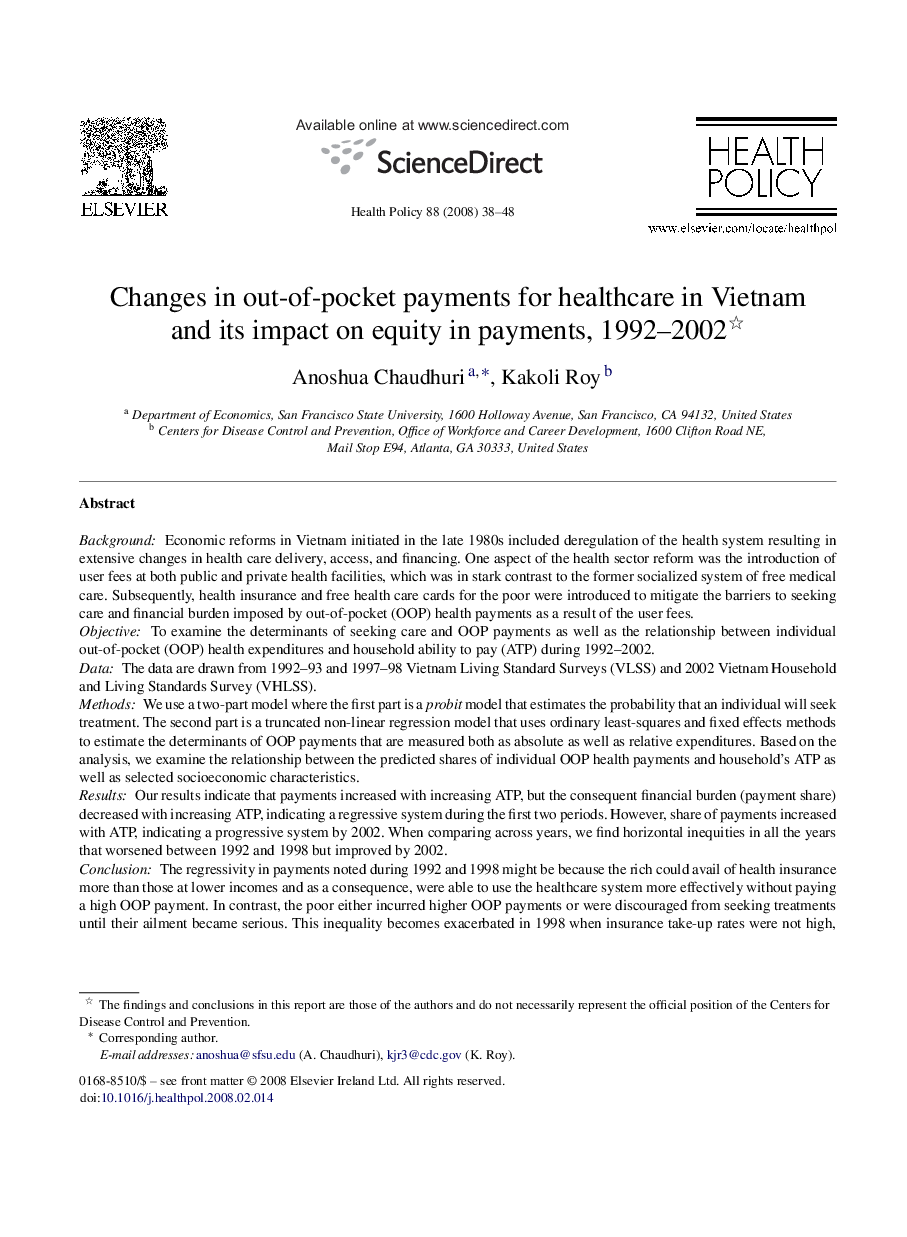| کد مقاله | کد نشریه | سال انتشار | مقاله انگلیسی | نسخه تمام متن |
|---|---|---|---|---|
| 4198677 | 1279072 | 2008 | 11 صفحه PDF | دانلود رایگان |

BackgroundEconomic reforms in Vietnam initiated in the late 1980s included deregulation of the health system resulting in extensive changes in health care delivery, access, and financing. One aspect of the health sector reform was the introduction of user fees at both public and private health facilities, which was in stark contrast to the former socialized system of free medical care. Subsequently, health insurance and free health care cards for the poor were introduced to mitigate the barriers to seeking care and financial burden imposed by out-of-pocket (OOP) health payments as a result of the user fees.ObjectiveTo examine the determinants of seeking care and OOP payments as well as the relationship between individual out-of-pocket (OOP) health expenditures and household ability to pay (ATP) during 1992–2002.DataThe data are drawn from 1992–93 and 1997–98 Vietnam Living Standard Surveys (VLSS) and 2002 Vietnam Household and Living Standards Survey (VHLSS).MethodsWe use a two-part model where the first part is a probit model that estimates the probability that an individual will seek treatment. The second part is a truncated non-linear regression model that uses ordinary least-squares and fixed effects methods to estimate the determinants of OOP payments that are measured both as absolute as well as relative expenditures. Based on the analysis, we examine the relationship between the predicted shares of individual OOP health payments and household's ATP as well as selected socioeconomic characteristics.ResultsOur results indicate that payments increased with increasing ATP, but the consequent financial burden (payment share) decreased with increasing ATP, indicating a regressive system during the first two periods. However, share of payments increased with ATP, indicating a progressive system by 2002. When comparing across years, we find horizontal inequities in all the years that worsened between 1992 and 1998 but improved by 2002.ConclusionThe regressivity in payments noted during 1992 and 1998 might be because the rich could avail of health insurance more than those at lower incomes and as a consequence, were able to use the healthcare system more effectively without paying a high OOP payment. In contrast, the poor either incurred higher OOP payments or were discouraged from seeking treatments until their ailment became serious. This inequality becomes exacerbated in 1998 when insurance take-up rates were not high, but the impact of privatization and deregulation was already occurring. By 2002, insurance take-up rates were much higher, and poverty alleviation policies (e.g., free health insurance and health fund membership targeted for the poor) were instituted, which may have resulted in a less regressive system.
Journal: Health Policy - Volume 88, Issue 1, October 2008, Pages 38–48